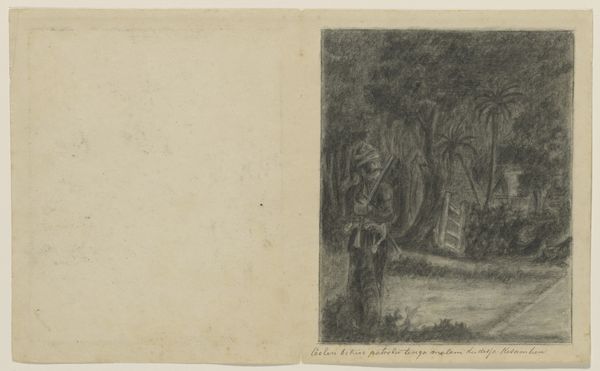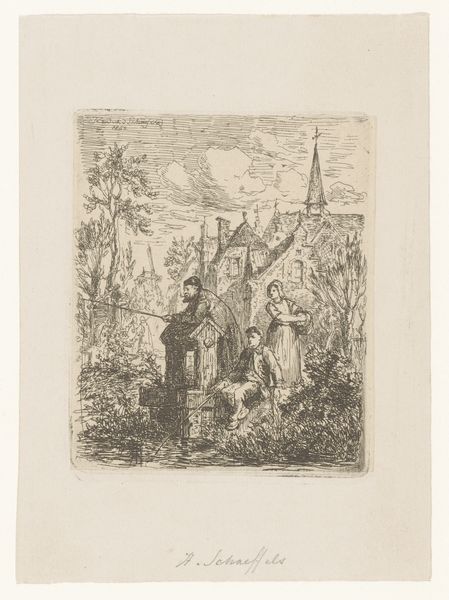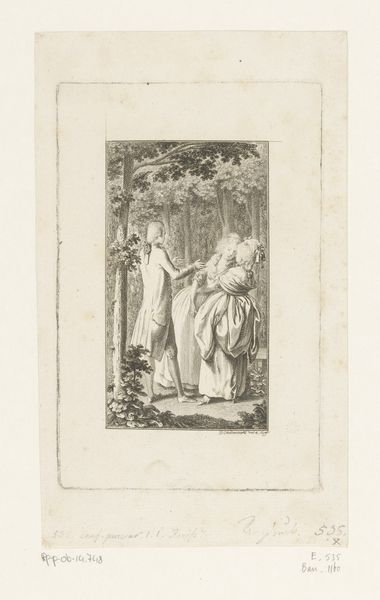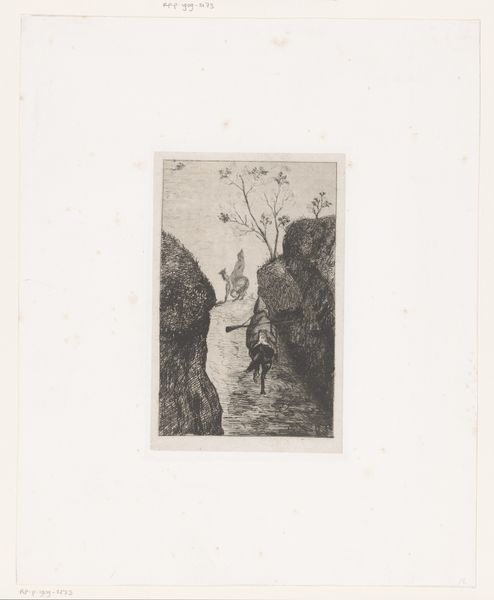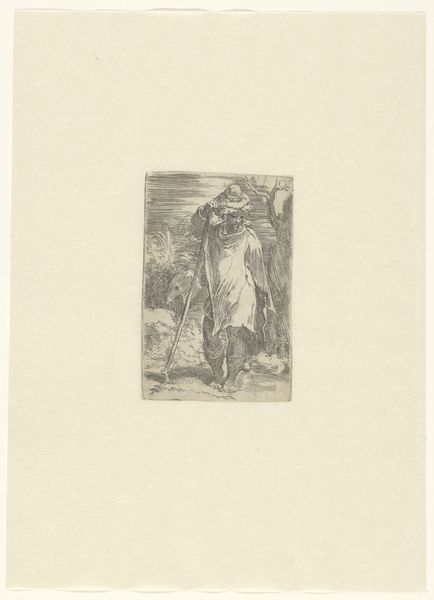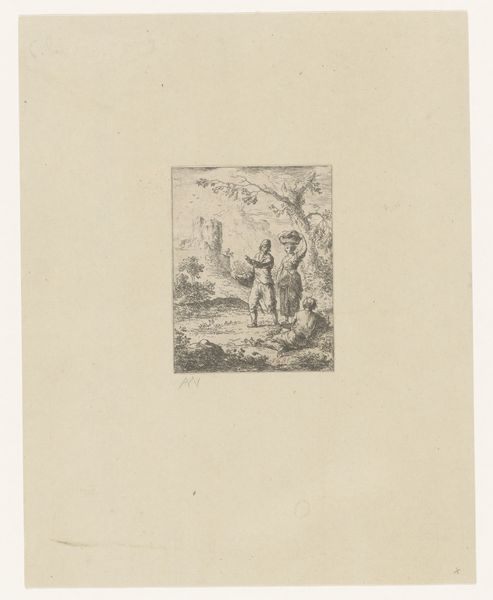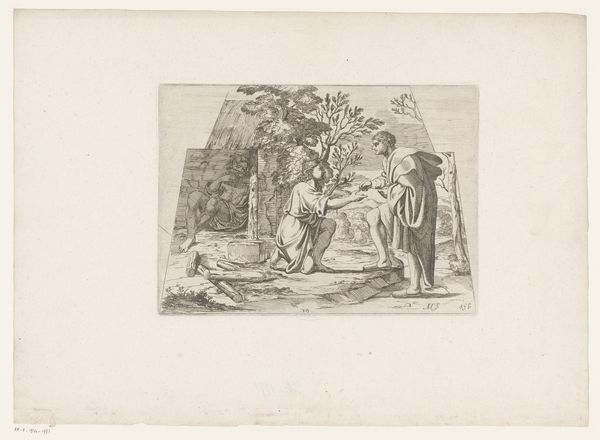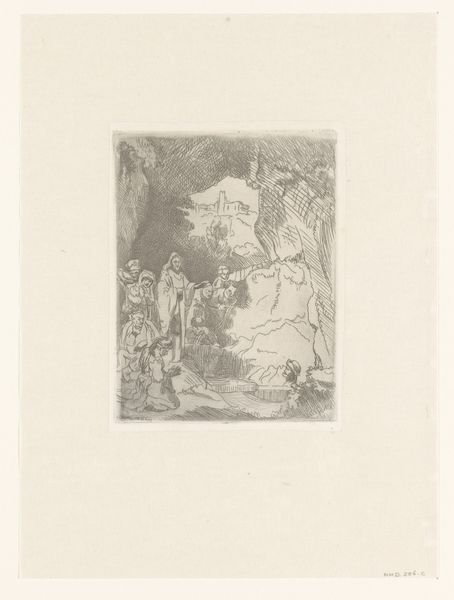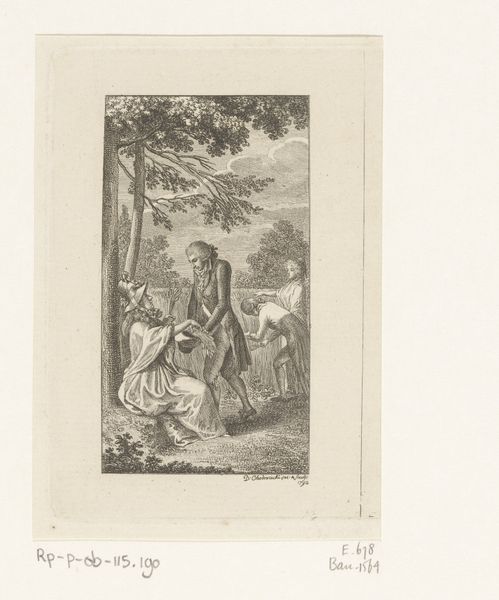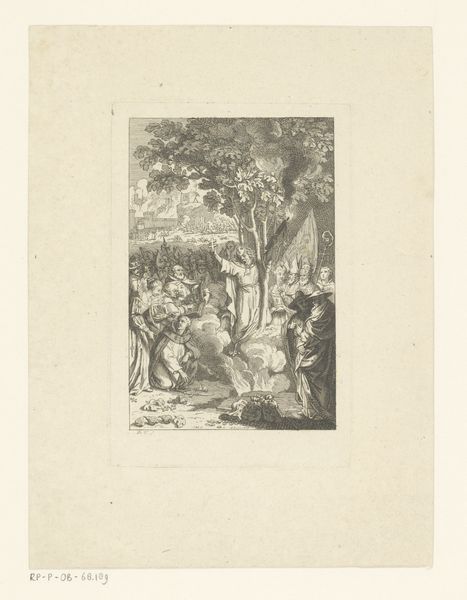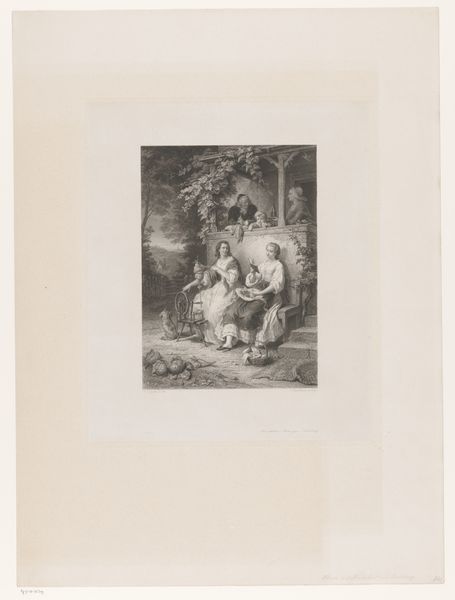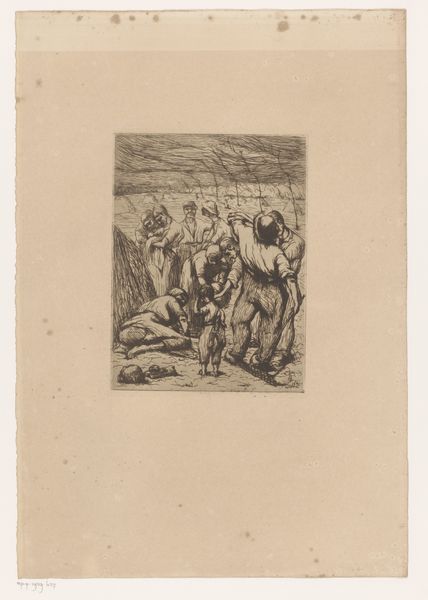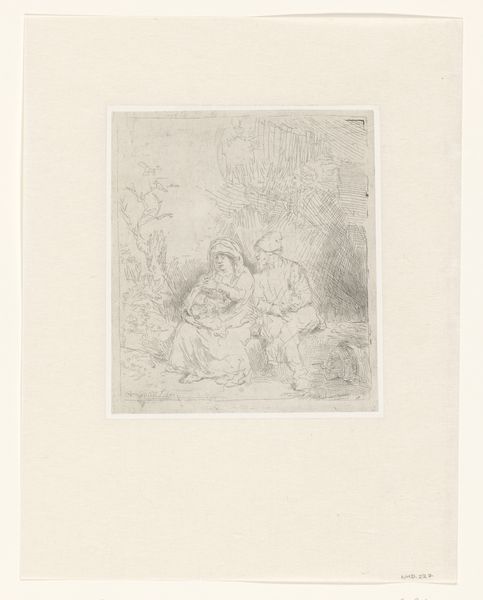
Dimensions: height 109 mm, width 60 mm
Copyright: Rijks Museum: Open Domain
Editor: So, here we have "Wandelende dames en heren," or "Walking Ladies and Gentlemen," an etching by Daniel Chodowiecki, made around 1780. It’s currently housed in the Rijksmuseum. My first thought is how detailed it is for an engraving. The figures almost seem frozen in a theatrical pose. What symbols do you notice in this artwork? Curator: The scene speaks to the performance of social roles and courtship rituals of the late 18th century. Observe how the artist has positioned the central couple. The woman’s gaze is slightly averted, isn't it? This could symbolize modesty or perhaps even coyness, key attributes idealized during the time. The forest, a cultivated, tamed nature, stands in contrast to the untamed forest of folklore. Does this "taming" reflect societal constraints of that era? Editor: That's interesting about the averted gaze! And yes, a cultivated forest rather than something wild definitely makes sense given the subject matter. What about the other figures? The ones slightly behind them? Curator: Indeed! The presence of chaperones or perhaps gossiping onlookers reinforces the performative aspect. These individuals underscore how courtship occurred within a very public, scrutinized sphere. Even the gentleman's sword can be interpreted. Is it purely ornamental, reflecting status, or does it also hint at a potential for protection? Remember, images, like language, are culturally conditioned. Editor: I hadn’t thought about the sword like that, a hint of protection amidst the civility. That brings the whole scene into a sharper focus. Curator: And doesn’t this work then prompt a reflection upon our contemporary rituals? What are our modern “forests” and how do we perform within them?
Comments
No comments
Be the first to comment and join the conversation on the ultimate creative platform.
